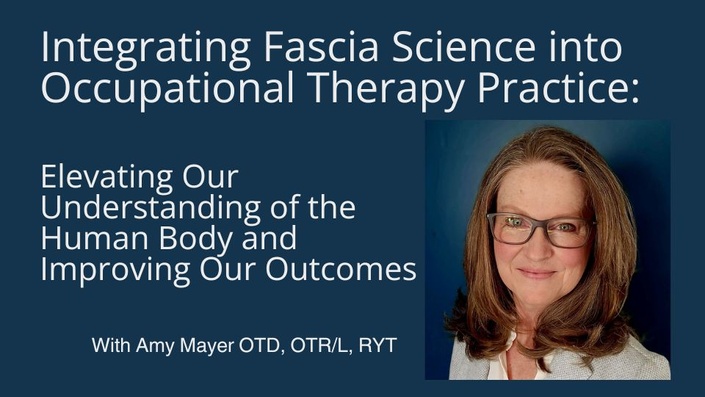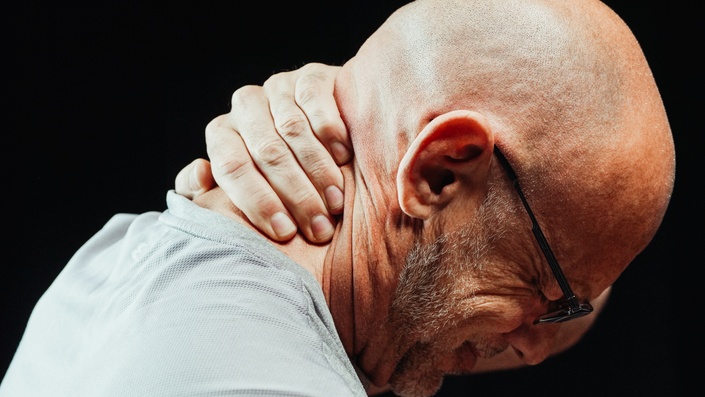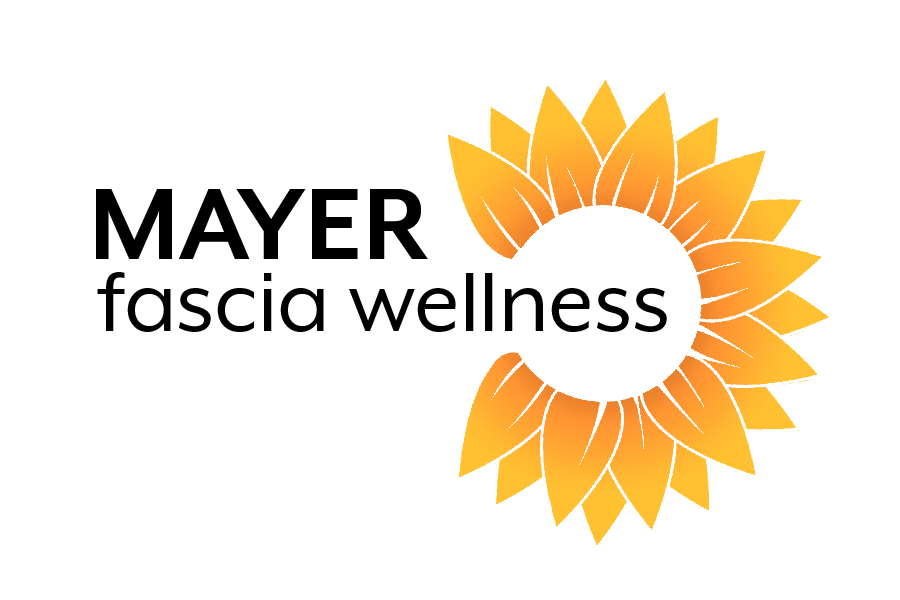Be a leader in understanding and treating the human body through the science of fascia.
Get fascia-informed!

The Occupational Therapy Practitioner's Guide to Myofascial Release Self-Treatment
How to Relieve Pain, Tension, and Stiffness Naturally and Start Feeling Better in Just Minutes
Follow along with over 20 videos to experience this gentle yet highly effective method of myofascial stretching to eliminate your pain and tension.
You also get the bonus eBook to support your learning!
Why do occupational therapy practitioners need this course?
Pain is the top reason given for seeking health care (NCCIH, 2021).
- Pain is one of the primary reasons clients refuse therapy.
- Pain slows progress towards goals.
- Some clients can't take or don't want to take pain medications.
- Pain is a huge problem!
My clients love having the ability to use these techniques and be less reliant on medications and be less reliant on me.
You can use these techniques in any setting and with almost any client. Many of the techniques can be done in standing, sitting or in bed.
When we can offer something more natural that empowers our clients to manage their own pain, we should do it.
National Center for Complementary and Integrative Health. (2021, September 22). Pain. https://www.nccih.nih.gov/health/pain
Yes, you and your clients will benefit from this course!
As an occupational therapist with thirty years of experience helping people eliminate pain through myofascial release, I'm excited to offer this information online to everyone! I've been teaching this class in person for years. Over and over, I hear how much people love it and continue to use the techniques at home to keep their bodies flexible and pain-free.
Here's what past clients have said about my myofascial self-care stretching workshop:
- "I really feel relaxed. So glad I found out about tight fascia!"
- "I now understand how to use all the extra props, and I know why I have tender spots on my body."
- "This class taught me so much more about stretching out my body. I would recommend it to anyone to help relieve pain."
- "Very easy to follow and extremely effective in a very short time."
- "Wonderful workshop, [I] loved being able to control the use of the props myself and cover every area of the body. I loved learning all about the fascial system and then being able to apply that info with the awesome active stretches. Fantastic from start to finish."
- "Awesome tips and instructions for releasing the fascia. I found lots of trouble spots and areas I didn’t even know were tight! I feel like I will sleep like a baby tonight."
- "This class provides so many easy-to-do, at-home stretches to help relieve tension and tightness in the whole body."
- "I ran 7 miles before I came. My hips and lower back hurt. I feel one thousand times better and no longer hurt."
- "I didn’t realize there was a better way than the foam roller! The balls in the bag are great!"
- "I enjoyed learning ways to incorporate these stretches into my daily life in order to be able to continue the techniques I learned even with a busy small family. Thank you!"
- "Loved it. I have had chronic pain for years, and this helps alleviate it considerably!"
Welcome!
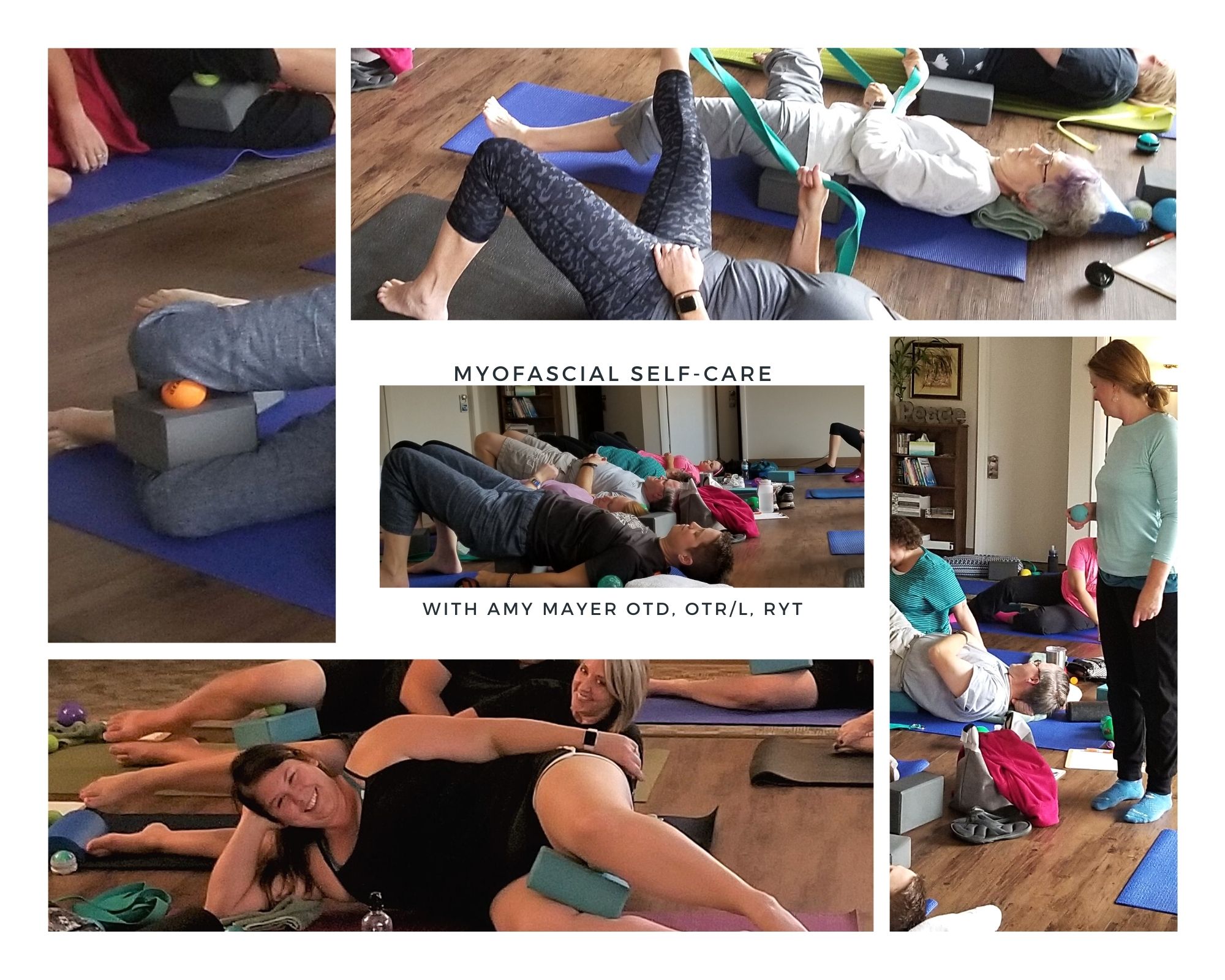
Now YOU can learn online with me!
The Myofascial Self-Care Stretching Workshop has been my most successful in-person workshop! Now YOU can attend online and learn at YOUR pace. You get double the techniques plus three full one-hour classes helping you put the techniques together to address your individual issues.
The Complete Guide to Myofascial Self-Care Curriculum
Bonuses!
You get several bonuses when you take the course.
Three full 1-hour classes I taught live for my clients. Upper body, lower body and common trouble spots.
and
A downloadable copy of my workbook based on this class!

Athletes
If you are currently using a foam roller and not getting the results you want, this method will get you those results more safely, efficiently, and effectively.

Health and Wellness Practitioners
You'll not only learn how to care for yourself more effectively but also how to instruct your patients to stretch themselves safely and get better results!

Adults of All Ages
This method will help you live your best life by staying flexible and pain-free at any age.
Stop Wasting Time!
If you've tried other methods of stretching and rolling to get rid of your pain, stop those and start stretching with your fascia in mind.
If your fascia is the culprit in your pain, you are wasting your time with other methods. If your fascia is tight, it rules the shape and tension in your body. Traditional methods of stretching will NOT release your fascia.

Meet Your Instructor
I've been using the Barnes style of myofascial release with my clients for nearly 30 years. I combine my doctorate degree in occupational therapy with extensive training in myofascial work, ergonomics, body alignment, yoga, natural movement, and stress management to design pain management strategies that work for my clients.
My goal is to empower my clients to create a pain-free, high-quality life!
Live Your Best Life!
I use the methods I teach to keep myself flexible and strong. My main goals as I age are to be able to keep up with my grandkids and to continue the work I love.
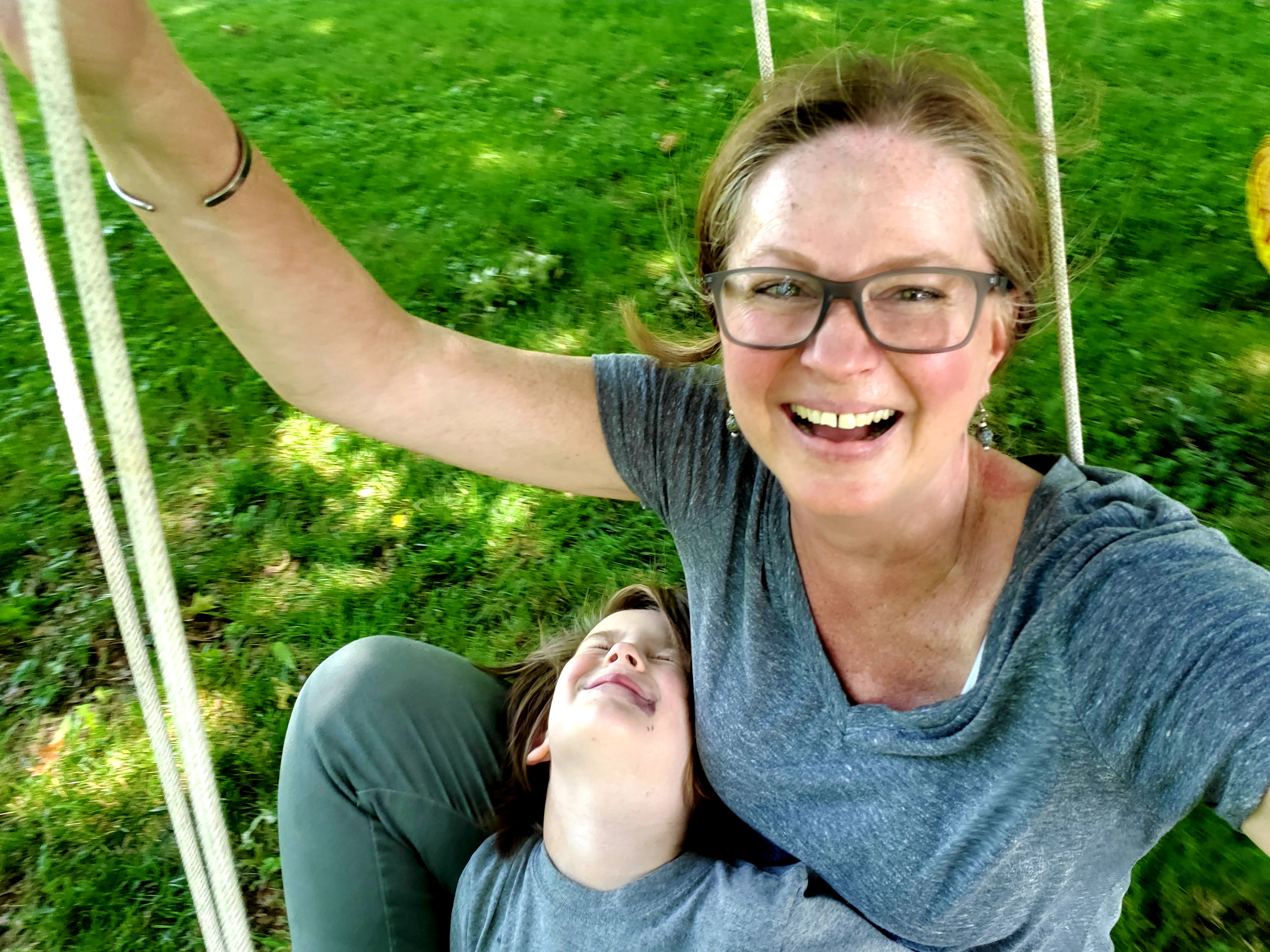
More Courses from Mayer Fascia Wellness
Frequently Asked Questions
Q: I don’t have much time to dedicate to stretching each day; can I still be successful?
A: Yes! A little each day is still helpful. You can practice many of the stretches while doing other activities such as reading, listening to a podcast, washing dishes, or watching television.
Q: I have limited mobility. Will I be able to complete this course?
A: If you can get on the floor, you can likely do most of the activities in this course. If you are unable to get on the floor, you can adapt many of them for the wall, a chair, or another firm surface. Clients of mine who are uncomfortable getting on the floor have purchased a treatment or massage table with adjustable legs for many activities. Depending on your mobility issues, you may require one-to-one coaching.
Q: I already practice yoga; how is this different?
A: This style of stretching is somewhat similar to the Yin style of yoga. However, myofascial self-stretching also uses an entirely different set of props and a separate set of principles to follow. You’ll find myofascial self-care stretching very complementary to your yoga practice.
Q: At my gym, I was taught to roll out my fascia with a foam roller or a Lacrosse ball. Is this the same?
A: No! You should not use hard tools aggressively on your body. This can do more harm than good. Rolling does not release fascia. Releasing fascia requires gentleness and time. I use gentle rolling in this course to explore the body to find tender areas that need to be released. I also recommend gentle rolling after a release to mobilize tissues. But, rolling alone will not release tension in your fascia.
Q: Do I need to do these for the rest of my life?
A: I recommend more frequent sessions at first, then slowly spread out your sessions until you find the correct dose for you. Life keeps putting tension into our bodies unless we change our lifestyle dramatically.
Q: How often do I need to do these releases?
I would recommend practicing your self-care routine as often as possible in the beginning. If you have more intensity upfront, you can slowly spread out your sessions as time goes on until you find your correct dose. Unless you dramatically change your lifestyle, you’ll never be completely free from some tension. Don’t think of myofascial self-care as a sentence but a treat for your body and genuine “me-time” to relax.
Q: How do I know which ones I should do?
A: Most of the stretches and releases will correspond with where you experience pain or tension. For example, if your neck is constantly sore, you could start with the 3 Phase Neck Stretch. However, don’t stop there! You will be surprised what working on the upper back and shoulders can do for the neck!
Q: Can I do it too much?
A: As long as you’re gentle, no! I encourage you to try working stretches or releases into your daily routine at home or even the workplace!
Q: Can my kids do this with me?
A: I recommend ages ten and up. There is no quality guiding research here, but younger kids are naturally more hydrated and flexible. If you notice posture issues, then they may benefit or if they are very inactive.
Q: I’m a health or wellness professional; can I use this course for continuing education credit?
A: This course offers seven (7) hours of didactic and experiential learning once all the exercises, readings, videos, and bonus classes are completed. This course has not been preapproved by an accrediting agency for continuing education but does meet the basic requirements for continuing education credit for most states for occupational, physical, and speech therapists. Many other professions may use this course for continuing education credit as well. It is suggested that you review your state, national, or other governing body requirements before submitting this course for credit.
Q: I work out three times a week; should I do these stretches before or after my workout?
A: It is not recommended you do a heavy workout after myofascial stretching, but it is OK to workout BEFORE you do this style of stretching . This style of stretching changes the length and shape of your connective tissue, which can influence your coordination and strength. However, I recommend gentle movement such as walking or doing light chores around the house to integrate the changes in your body.
